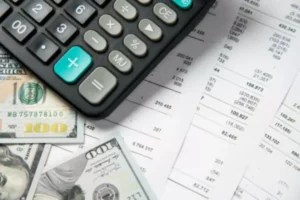
Conversely, a company will generally embark on a reverse split or share consolidation to bring its share price into the minimum range necessary to satisfy exchange listing requirements. While the lower number of outstanding shares may hamper liquidity, it could also deter short sellers since it will be more difficult to borrow shares for short sales. Alternatively, the total number of shares outstanding can be easily calculated as a company’s market capitalization divided by the current share price.
Outstanding shares are the total number of shares issued by the company except the ones held in the company treasury. It includes all the shares held by public, institutional investors and company insiders and are used to determine the market capitalisation of the company. The formula for determining the outstanding shares is the number of shares outstanding x current share price.
How to Calculate Shares Outstanding (Step-by-Step)
Once you have collected the total number of preferred shares, common shares outstanding, and treasury shares, you’re ready to do your calculation. At any moment in time, a corporation has a specific number of shares that it has authorized for sale, to individual or institutional investors. Outstanding shares are the total number of common stocks owned by investors.
To understand an outstanding shares definition, one must first understand that not all stocks are traded publically. There are privately held shares of a company that can be only held by people within the company, and there are public shares. The total number of shares that can be traded publicly https://www.bookstime.com/ by any investor represents the outstanding shares. Weighted average shares must be used when you want to find out how many common stock were in effect during a specific time frame. Common examples would be calculating the company’s earnings per share or per-day outstanding share.
The total can fluctuate
The whole point of companies going public is to raise money and for investors to achieve financial gains. Therefore, the shares outstanding after that date (and retired on 1 September) are not the same as those that existed prior to that date. Thus, the situation during the year was equivalent to having 111,000 shares outstanding throughout the year. Group 2 consists of the 8,000 shares outstanding from 1 April to the end of the year and group 3 is the 12,000 shares outstanding from 1 April to 31 August.

Shares outstanding are the basis of several key financial metrics and can be useful for tracking a company’s operating performance. The balance sheet is one of the key documents that investors use to evaluate a company, so it’s important to become familiar with it. The number of shares outstanding can fluctuate as the business issues more shares, repurchases some of them, and retires shares. One limitation of book value per share is that, in and of itself, it doesn’t tell you much as an investor. Investors must compare the BVPS to the market price of the stock to begin to analyze how it impacts them.
Everything You Need To Master Financial Modeling
Recall that we’re looking for a general solution to calculate market cap for a company. Our current problem is that we may not have access to pricing information for all of that company’s share classes. Strictly speaking, there’s no rule or law that forces the share prices to align with their par values like this. In practice, the market keeps these prices in line through various means like arbitrage. The core mechanic that makes it work is the ability to convert shares of one class to shares of another class at a fixed rate.

The number of outstanding shares might change at any time because of corporate actions like splits, mergers, acquisitions, etc. Preferred stock is a special class of shares that is generally considered a hybrid instrument, including properties of both a debt and equity instrument. Preferred stocks are higher ranking than common stock, but also subordinate to bonds in terms of claim, https://www.bookstime.com/articles/how-to-calculate-shares-outstanding or rights to their share of the company’s assets. Companies that have publicly traded stocks in the United States are required to file public financial disclosures to the Securities and Exchange Commission (SEC) which include the company’s balance sheet. You can also find the company’s balance sheet in its annual report, which can often be found on the company’s website.






